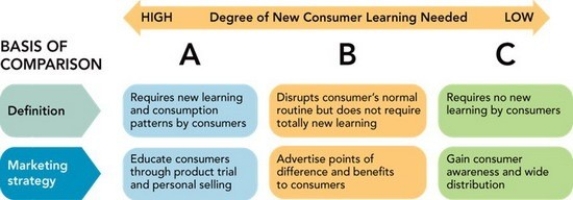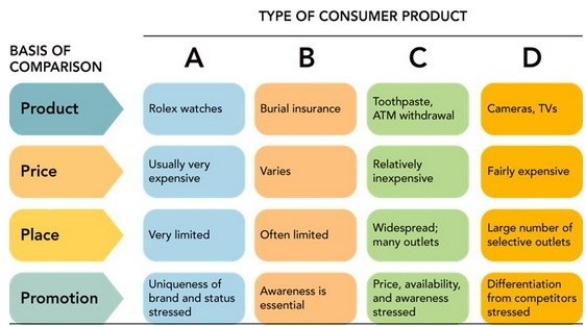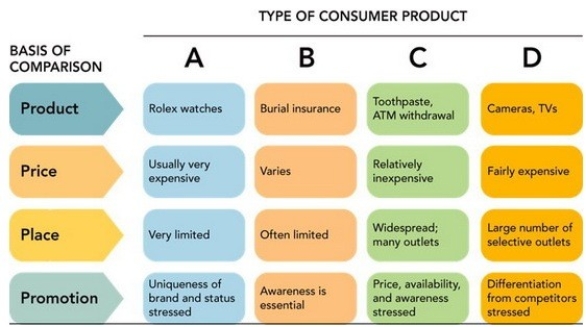A) specialty product.
B) unsought product.
C) discretionary product.
D) shopping product.
E) convenience product.
G) None of the above
Correct Answer

verified
Correct Answer
verified
Multiple Choice
Among business products,support products include installations such as
A) convenience products.
B) buildings and fixed equipment.
C) tools and office equipment.
D) raw materials and component parts.
E) maintenance,repair,and legal services.
G) C) and D)
Correct Answer

verified
Correct Answer
verified
Multiple Choice
Convenience products are
A) items that consumers will make special efforts to seek out and buy.
B) items for which consumers compare several alternatives on criteria such as price,quality,or style.
C) products consumers purchase frequently and with a minimum of shopping effort.
D) ancillary products used to make other products work more efficiently.
E) low-cost items for which there are numerous substitutes and generic equivalents.
G) A) and B)
Correct Answer

verified
Correct Answer
verified
Multiple Choice
During a recent shopping trip to Target,Carlie noticed that the store offered many Glad products,including many different types of trash bags and a large variety of food storage containers.For Glad,each of these two product groupings is an example of a
A) product line.
B) product item.
C) product mix.
D) product industry.
E) product class.
G) A) and E)
Correct Answer

verified
Correct Answer
verified
Multiple Choice
Wrigley's new Alert Energy Caffeine Gum "offers a portable solution that lets adults control their caffeine intake." This new gum is most likely which type of innovation?
A) continuous innovation
B) dynamically continuous innovation
C) discontinuous innovation
D) insignificant innovation
E) disruptive innovation
G) C) and D)
Correct Answer

verified
Correct Answer
verified
Multiple Choice
Which of the following is a way that a product line might be established?
A) Products are made of similar materials.
B) Products are frequently used together.
C) Products were new at the same time.
D) Products are identical except for price.
E) Products require high levels of R&D.
G) B) and E)
Correct Answer

verified
Correct Answer
verified
Multiple Choice
Figure 10-2
 -According to Figure 10-2 above,column A represents a(n)
-According to Figure 10-2 above,column A represents a(n)
A) spontaneous innovation.
B) continuous innovation.
C) discontinuous innovation.
D) dynamically continuous innovation.
E) evolutionary innovation.
G) A) and B)
Correct Answer

verified
Correct Answer
verified
Multiple Choice
Among business products,printer paper would be classified as which type of support product?
A) installations
B) accessory equipment
C) supplies
D) industrial services
E) raw materials
G) D) and E)
Correct Answer

verified
Correct Answer
verified
Multiple Choice
The stage of the new-product development process that internally and externally evaluates new-product ideas to eliminate those that warrant no further effort is referred to as
A) development.
B) Stage-Gate.
C) idea generation.
D) business analysis.
E) screening and evaluation.
G) B) and C)
Correct Answer

verified
Correct Answer
verified
Multiple Choice
The division of products into durable and nondurable goods helps to
A) comply with NAICS guidelines.
B) address environmental concerns.
C) comply with ISO 9000 requirements.
D) classify products for tax purposes.
E) provide direction for marketing actions.
G) C) and D)
Correct Answer

verified
Correct Answer
verified
Multiple Choice
Which of the following is expected to be the next chapter for Apple's product development?
A) Apple Fridge
B) iCar
C) iToothbrush
D) iFlashlight
E) Apple Shoes
G) B) and C)
Correct Answer

verified
Correct Answer
verified
Multiple Choice
OUT! International's Hey! There's A Monster In My Room spray with a bubble-gum fragrance was designed to rid scary creatures from a kid's bedroom.Although a clever idea,it failed because it
A) did not satisfy customer needs on critical factors.
B) had poor product quality.
C) had bad timing.
D) had an incomplete market and product protocol.
E) had too little market attractiveness.
G) C) and D)
Correct Answer

verified
Correct Answer
verified
Multiple Choice
Which of the following best illustrates the concept of derived demand?
A) The number of retail stores in a downtown area decreases even though demand for retail goods increases.
B) An increase in the number of new,single-family homes results from a spike in the gross national product.
C) A Chinese plastics company increases its output because of its customers' higher toy exports to the United States.
D) A heat wave results in an increased demand for air conditioners.
E) Honda reducing its car prices causes GM to do the same.
G) None of the above
Correct Answer

verified
Correct Answer
verified
Multiple Choice
Services can be classified according to whether they are
A) national or global.
B) independent contractors.
C) privately owned or publicly owned.
D) delivered by people or equipment.
E) owned by individuals or corporations.
G) None of the above
Correct Answer

verified
Correct Answer
verified
Multiple Choice
Figure 10-1
 -With respect to price,which of the following type of consumer product would usually be very expensive?
-With respect to price,which of the following type of consumer product would usually be very expensive?
A) convenience product
B) shopping product
C) discretionary product
D) specialty product
E) unsought product
G) A) and E)
Correct Answer

verified
Correct Answer
verified
Multiple Choice
Until 1996,U.S.carmakers sent very few right-hand-drive cars to Japan while German carmakers exported several models with the steering wheel on the right to accommodate driving on the left-hand side of the road in Japan.American car manufacturers could blame their failure to a great degree on
A) an insignificant point of difference.
B) too little market attractiveness.
C) not satisfying customer needs on critical factors.
D) poor product quality.
E) incomplete market and product protocol.
G) A) and E)
Correct Answer

verified
Correct Answer
verified
Multiple Choice
A general review of possible marketing and product synergies,economic analysis,and cannibalization potential would all take place during which stage of the new-product development process?
A) business analysis
B) screening and evaluation
C) new-product strategy development
D) development
E) These activities are addressed at every stage except new-product strategy development.
G) A) and C)
Correct Answer

verified
Correct Answer
verified
Multiple Choice
Industrial services are support products that include items such as
A) stationery,paper clips,and brooms.
B) tools and office equipment.
C) buildings and fixed equipment.
D) raw materials and component parts.
E) maintenance,repair,and legal services.
G) C) and D)
Correct Answer

verified
Correct Answer
verified
Multiple Choice
Figure 10-1
 -With respect to distribution,shopping products are available
-With respect to distribution,shopping products are available
A) by special order from the manufacturer only.
B) at an extremely small number of outlets.
C) at relatively few outlets.
D) at a large number of selective outlets.
E) on a widespread basis at many outlets.
G) C) and D)
Correct Answer

verified
Correct Answer
verified
Multiple Choice
During which stage of the new-product development process are audiences allowed to preview actual movies like Thor: Ragnarok (a sneak preview) so that changes might be made before they are released to the general public?
A) market testing
B) business analysis
C) commercialization
D) screening and evaluation
E) concept testing
G) A) and D)
Correct Answer

verified
Correct Answer
verified
Showing 201 - 220 of 289
Related Exams